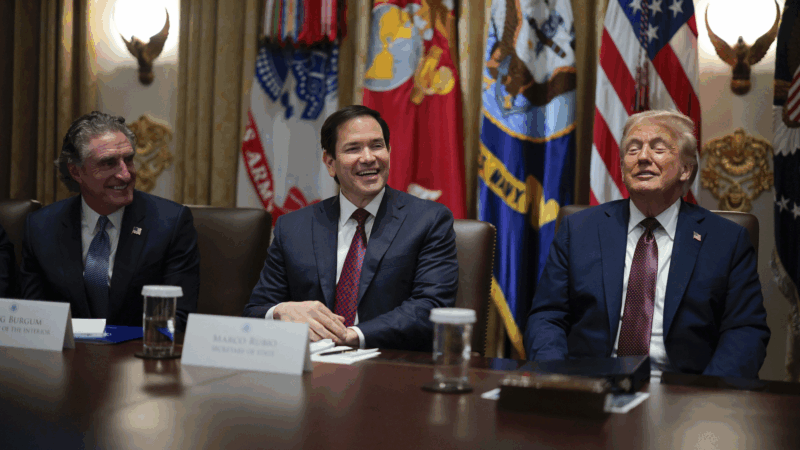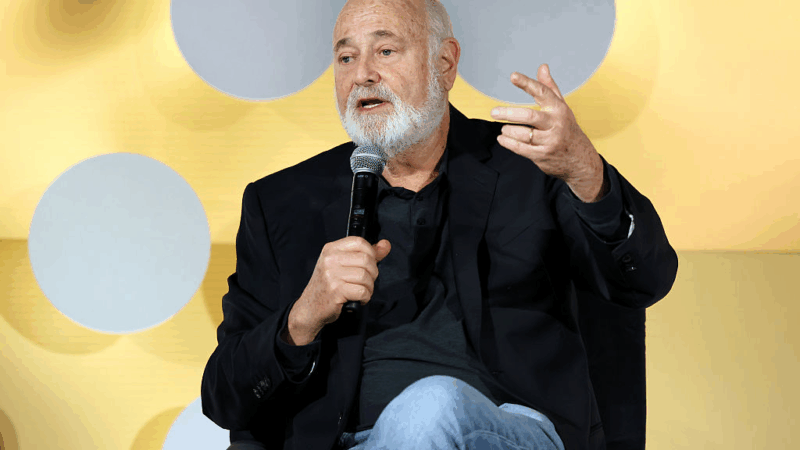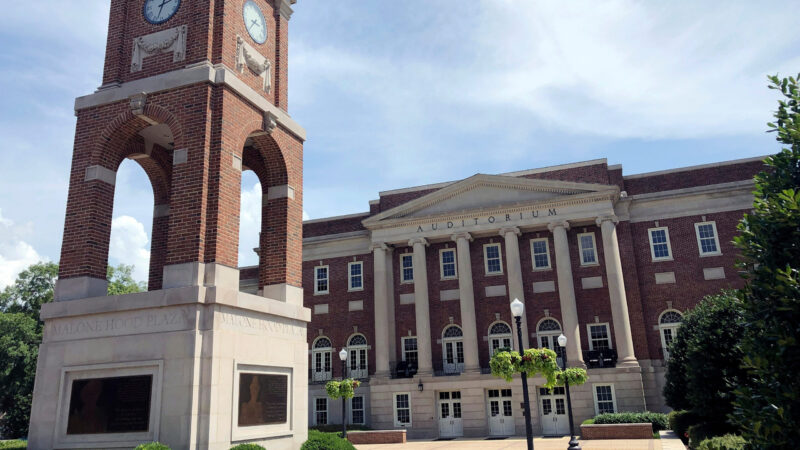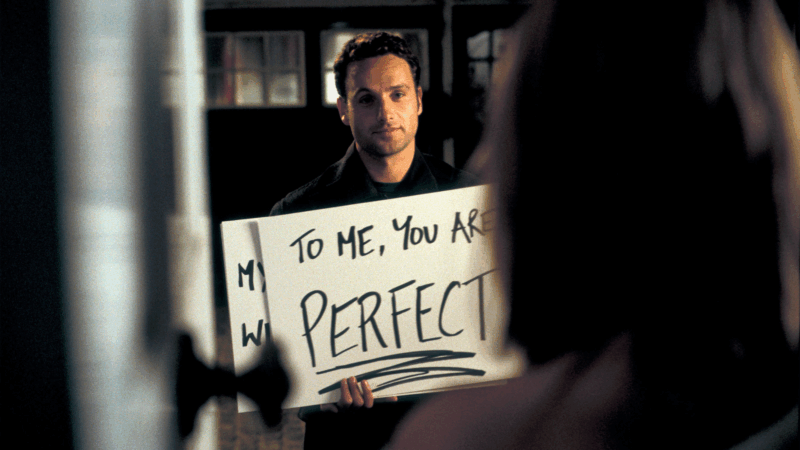Hats on hats: How the Trump administration is loading officials with jobs
When it was Secretary of State Marco Rubio’s turn to speak during President Trump’s recent marathon Cabinet meeting, he joked about his current employment status.
“For me personally, this is the most meaningful Labor Day of my life, as someone with four jobs,” Rubio said to laughter. “It’s true.”
Rubio is currently serving as secretary of state, acting national security adviser and acting archivist of the United States. Late last week, he handed off his fourth job — acting director of the U.S. Agency for International Development — to another administration official, who already had two other jobs himself.
President Trump has a pattern of giving people in his administration multiple very big jobs. There are now at least a dozen administration officials serving in two jobs or more.
There’s Treasury Secretary/acting IRS Commissioner Scott Bessent; the Health and Human Services deputy secretary who is now also interim director for the Centers for Disease Control and Prevention, Jim O’Neill; Transportation Secretary Sean Duffy, who is now also the acting NASA administrator; and U.S. Trade Representative Jamieson Greer, who’s been put in charge of the Office of Special Counsel.
“This is no way to run anything and certainly not a way to run our government,” said Max Stier, who leads the Partnership for Public Service, which exists to promote best practices in government.
Stier is beside himself with all the double- and triple-hatting in the second Trump administration. He says this is like asking “a single player to be able to play your center and your point guard on your basketball team at the same time.”
‘There’s not enough time in the day’
In most cases, the jobs opened up when Trump fired the person who previously held it. And then, instead of having someone at that agency ascend to an interim leadership role, Trump chose a Senate-confirmed loyalist — often from a completely unrelated agency. Trump is fully within the law in doing this, but he is an outlier among presidents for operating this way.
“Other presidents don’t tend to do this,” said Kathryn Dunn Tenpas, who tracks White House staffing at the Brookings Institution.
She’s done many oral history interviews with officials from other administrations, all of whom talked about how absolutely overwhelming their jobs were. And they only had one.
“The notion that somebody could have multiple jobs in a White House is simply beyond the pale,” said Tenpas. “There’s not enough time in the day.”
The White House defends the practice, saying Trump has assembled a talented team.
“Some officials hold multiple roles, which allows for greater communication and collaboration across the administration,” said Anna Kelly, a White House spokesperson, in a statement to NPR. “The results of the President’s first seven months back in office speak to his exceptional leadership and the capacity of his team to execute all of the American people’s priorities — inflation has cooled, the border is secure, our country is strong, and the best is yet to come!”
Loading…
The heavy-hatters
Among the many officials with multiple hats, three stand out for their extra-full plates.
One of them is former Ambassador to Germany Richard Grenell, who sat at Trump’s side during his visit to California in late January to survey the wildfire damage. Trump asked Grenell to oversee the federal response to the California fires.
Days later, Grenell flew to Venezuela to secure the release of six detained U.S. citizens, in his role as Trump’s special missions envoy. Less than two weeks later, Trump gave Grenell a third job as interim executive director of the Kennedy Center, the performing arts center in Washington, D.C.
“Everything Ric ever touched has worked out,” Trump said last month, praising a man who, in Trump’s first term, also served in multiple overlapping roles.
Another standout is Rubio, who became acting national security adviser four months ago. At this point there is no apparent urgency to name a permanent replacement. Historically, there is only one other instance of someone serving as national security adviser and secretary of state simultaneously. That was Henry Kissinger in the Nixon administration.
“Secretary Rubio’s role as national security adviser allows him to better understand the president’s priorities and execute them across our foreign policy apparatus as secretary of state,” said Kelly.
But those are both “more than full-time jobs,” said Alexander Gray, who was chief of staff for the National Security Council in the first Trump administration.
He said Rubio is successfully navigating his dual roles of secretary of state and acting national security adviser, by running the National Security Council the way the president wants it run, with Trump and his foreign policy instincts taking the lead.
“If you don’t have delusions of grandeur about what the job is supposed to do, if you don’t think you are a policy maker, you can do the job very effectively, even while doing other things,” said Gray.
The other administration official with as many jobs as Rubio and Grenell is Russell Vought, the director of the Office of Management and Budget. He has also been acting director of the Consumer Financial Protection Bureau since February. This dual-role setup also existed in Trump’s first term, when OMB director Mick Mulvaney served as acting director of CFPB.
It’s a semi-independent watchdog agency most Republicans have opposed since its inception.
“[Vought] actively wants to dismantle it,” said Stier. “So that puts his hand on the tiller to make sure he can run it into the rocks. So, there, I think it says a lot about what they think of our government.”
Not an accident
Vought also became acting director of USAID last week, with the express purpose of closing it down. USAID was created by former President John F. Kennedy and Congress to fight poverty and disease around the world, but the Trump White House argues it was wasting taxpayer dollars.
“A lot of people think it looks like a comedy skit where Marco Rubio is running every agency,” said Richard Stern of the conservative Heritage Foundation. “I actually think this is a process of very carefully putting trusted people in a position to gain that knowledge, to then use it for the betterment of government efficiency.”
Gray, who served in the first term, has another theory. He believes this is just Trump’s management style, honed over a lifetime of running the Trump Organization.
“And in a family business like the Trump Organization, people wear multiple hats,” said Gray, explaining that Trump took a similar approach to his first campaign and first term. Now, he said, it’s “turbocharged.”
“That’s his comfort level,” Gray said. “You find people who he’s comfortable with, who he thinks do a great job and you just keep giving them more responsibility.”
The hidden history of ‘White Christmas’
The tune crooned by Bing Crosby is still one of the most popular Christmas songs of all time. It's endured as a favorite — despite a complicated and controversial history.
Trump says Rob Reiner had ‘Trump Derangement Syndrome’ in post on his death
Officials are investigating the death of the Hollywood director as a homicide.
Professors, students appeal ruling on Alabama law banning DEI initiatives at public universities
The Alabama measure, which took effect in October 2024, is part of a wave of proposals from Republican lawmakers across the country taking aim at DEI programs on college campuses.
Odeal: Tiny Desk Concert
Right from the first note, Odeal instantly transports us to the warm, soulful pocket that we never leave.
Our picks for the worst Christmas movie ever
Bad movies can be fun in their own way.
All about character: Jane Austen fans on their favorites
As Jane Austen fans celebrate the 250th anniversary of her birth, they also celebrate her characters.







